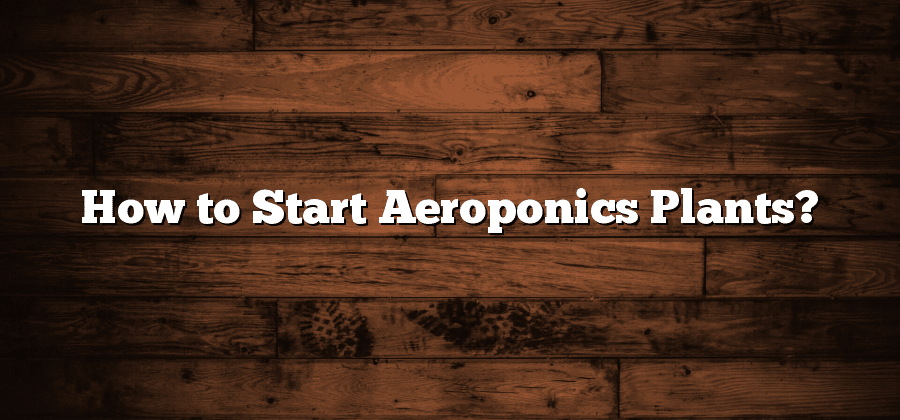Understanding the Basics of Aeroponics
Aeroponics is an innovative agricultural technique that involves growing plants without the use of soil. Instead, the plants are suspended in air and receive their nutrients through a misting system. This unique approach offers several advantages over traditional soil-based cultivation methods, including reduced water usage, higher crop yields, and faster growth rates. By harnessing the power of air and mist, aeroponics allows for greater control over plant nutrition, humidity, and root oxygenation, resulting in healthier and more robust plants.
One of the key features of aeroponics is its ability to promote exceptional root development. With no soil to navigate through, plants in an aeroponic system develop a dense network of fine, hair-like roots that efficiently absorb nutrients and water from the mist. This enhanced root structure not only supports rapid growth but also increases the plant’s ability to take up essential micronutrients. Additionally, because the roots are exposed to the air, they have access to higher levels of oxygen, which further enhances their growth and overall health. In the next sections, we will delve deeper into the various components and practices that contribute to a successful aeroponic system, allowing you to make the most of this cutting-edge technique in your own gardening or farming endeavors.
Selecting the Right Aeroponics System
Selecting the right aeroponics system is an important step in ensuring the success of your aeroponics venture. With so many options available in the market, it can be overwhelming to choose the most suitable system for your needs. However, by considering a few key factors, you can make an informed decision.
Firstly, you should assess the size of the system based on your available space and the number of plants you intend to grow. Whether you have limited space indoors or a larger outdoor area, there are systems designed to suit different setups. Secondly, consider the level of automation you desire. Some aeroponics systems come with advanced features like timers and sensors, while others require manual monitoring and adjustment. Additionally, it’s crucial to consider the quality and durability of the system, as it will directly impact the lifespan and performance of your aeroponics garden.
In conclusion, selecting the right aeroponics system requires careful consideration of factors such as size, automation, and durability. By taking these aspects into account, you can ensure that your choice aligns with your specific needs and sets the stage for a successful aeroponics endeavor.
Choosing the Ideal Plant Varieties for Aeroponics
There are various factors to consider when choosing the ideal plant varieties for aeroponics. Firstly, it is important to select plants that have a compact growth habit. This is because aeroponics systems typically have limited space and require plants that can grow vertically instead of spreading horizontally. Examples of plants with compact growth habits suitable for aeroponics include lettuce, spinach, and herbs such as basil and mint.
Another important consideration is the nutrient requirements of the plant varieties. Different plants have different nutrient needs, and it is crucial to choose varieties that can thrive in the nutrient-rich environment of an aeroponics system. Some plants, such as tomatoes and peppers, have higher nutrient requirements than others and may require additional supplements to ensure their optimal growth.
Additionally, it is advisable to select plant varieties that have proven success in aeroponics systems. This can lower the risk of failure and help beginners in aeroponic gardening achieve better results. Researching and consulting with experienced aeroponics growers can provide valuable insights into which plant varieties are the most suitable for this growing method.
Ultimately, choosing the ideal plant varieties for aeroponics involves careful consideration of factors such as growth habit, nutrient requirements, and previous success in aeroponic systems. By analyzing these factors, growers can ensure that their plants thrive in an aeroponics environment, leading to a successful and productive aeroponic garden.
Creating a Suitable Environment for Aeroponics Plants
Providing a suitable environment for aeroponics plants is crucial to ensure their healthy growth and optimal development. One of the key factors to consider is maintaining an appropriate temperature. The ideal temperature range for most aeroponics plants is between 68°F and 75°F (20°C and 24°C). Temperatures that are too high or too low can negatively impact plant growth and may lead to reduced yields. It is advisable to use a thermostat or temperature controller to monitor and regulate the temperature within the aeroponics system.
In addition to temperature, proper humidity levels must also be maintained. The relative humidity inside the growing area should ideally be around 50% to 70%. Higher humidity levels can promote the growth of mold and fungal diseases, while lower humidity can cause the plants to dry out. Maintaining the right humidity can be achieved by using a humidifier or dehumidifier, depending on the specific requirements of the plant species being cultivated. It is important to regularly monitor and adjust the humidity levels to provide an optimal environment for the aeroponics plants.
Preparing the Aeroponics Growing Medium
To ensure successful aeroponic gardening, it is crucial to carefully prepare the growing medium. Unlike traditional soil-based gardening, aeroponics relies on a sterile, yet nutrient-rich environment for plants to thrive. The growing medium in aeroponics serves as a support for the plant roots while also facilitating the uptake of nutrients and water. One commonly used medium in aeroponics is rockwool, a lightweight material made from basalt rock and chalk. Rockwool provides excellent aeration and water retention properties, making it ideal for promoting healthy root growth in aeroponic systems. Before using rockwool in your aeroponic setup, it is important to soak it in water with a slightly acidic pH level to neutralize any alkalinity and remove excess salts. This process helps to create an optimal chemical balance for the plants and prevent any potential nutrient imbalances or deficiencies.






